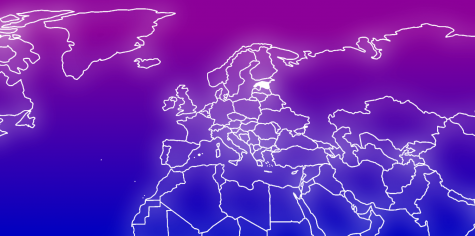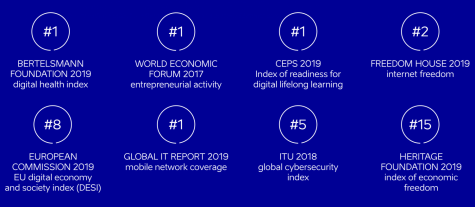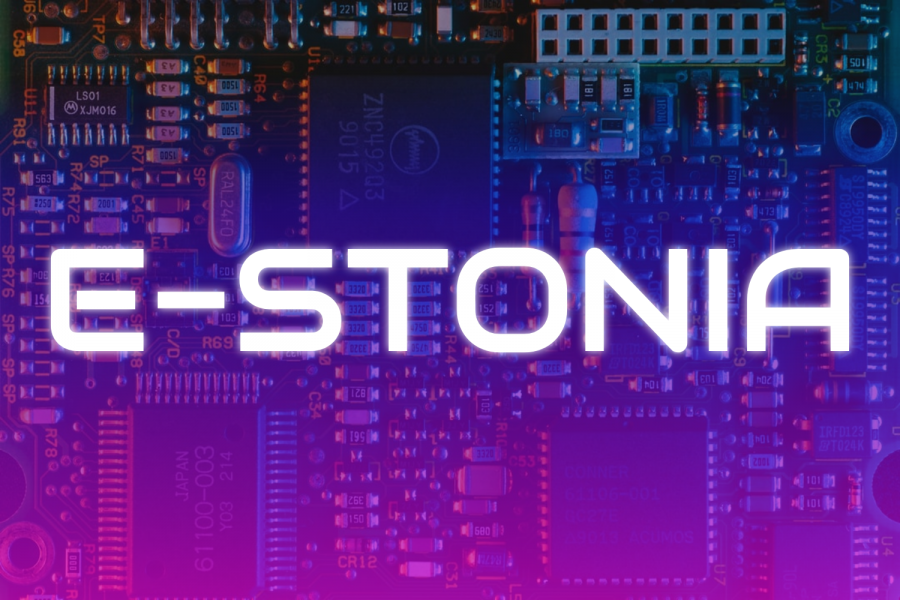The Most Efficient Government in the World
Mostly unheard of in the United States, Estonia’s government leads the world in technology and efficiency.
“You’ve become one of the most wired countries on Earth — a global leader in e-government and high-tech start-ups. The entrepreneurial spirit of the Estonian people has been unleashed, and your innovations, like Skype, are transforming the world.”
Those are the words of former president Barack Obama, though the nation he was referring to might have slipped through. Obama wasn’t referencing a high-tech Asian country like South Korea or an ultra-progressive Nordic country such as Sweden. He was talking about Estonia.
The Nordic countries are often placed on a pedestal by American Democrats, who view the nations as models for democratic socialism or as case studies to show how policies such as universal healthcare could work. Ignoring for a moment whether Swedish or Danish policies could effectively be implemented in the United States, an argument can be made that Estonia could be a better model.
In his speech from 2014, Obama commended the Estonian Government for its digitalization. Spearheaded by its e-Estonia initiative, the small Baltic nation has been working for more than two decades to streamline its government through the use of automation.
One of the headline achievements of the program is the ability to vote online. Estonia became the first country in the world to offer its citizens online voting in 2005. Since then, the percentage of people voting online has risen from 1.9% in 2005 to over 40% in the 2019 elections. Far beyond online voting, however, the Estonian government estimates that 99% of its services have now been digitized.
Called “the most efficient tax filing system in the world” by Business Insider, the Estonian government estimates that its larger e-government initiative has saved the country over 844 years of working time. In America, the IRS estimates that the average person spends between eleven and twelve hours filing their taxes each year. Many are forced to turn to professionals or services like Turbo Tax to help them understand the 3830-page document that makes up the core of the United States tax code. In Estonia, taking more than five minutes on your tax filing would be considered unusual. Their model would represent more than a 99.2% reduction in time here in the U.S.

Often overlooked on the world stage, the small European country of Estonia should serve as a technological model for the rest of us.
Even within the government, technology is implemented to streamline as much as possible. Called the “e-Cabinet,” the Estonian program is used to inform cabinet members of upcoming votes and provide them with relevant statistics. Ministers can then state if they have any objections — if not, the bill will be passed without the need for a voting procedure. The Estonian government has reported that its weekly cabinet meeting’s lengths are 1/16th of what they used to be before the system was introduced.
Estonia has stated the point of its e-government program is “to build a fully functioning country from scratch, while knowing we cannot afford the bureaucracy of a developed democracy.” Indeed, the efficiency of Estonia’s government is staggering. Starting this year, Estonia will begin to make some of its services “invisible.” This means that there will no longer be bureaucracy between a citizen wanting to do something and actually accomplishing it. For example, buying a car or changing driver’s license will be done completely digitally and will not require a single government worker. This will help to not only make government services faster but also reduce costs for the state.
It’s important to note that the Estonian government keeps security and privacy as top priorities for their e-government programs. Passwords can not be accessed by government officials even if they wanted to. Furthermore, in a press release, the government assured its citizens that “everyone will have an overview of how his or her data is processed in the information systems and be aware as to who is using it.” Backups are stored across many servers, not just in Estonia, but also outside state lines in Luxembourg, encrypted to the highest standards of database securities.
Since the beginning of the program, Estonia has made huge strides in nearly every metric. In the last seven years, Transparency International has reported a large decrease in corruption within the country. On its Corruption Perceptions Index, Estonia’s score has risen from 66/100 to 74/100, moving its ranking from 31st to 18th in the world. Not just limited to corruption, the homepage of the e-Estonia dedicates a whole section to the awards and accolades Estonia has received, ranging from cybersecurity to economic freedom.

The effect of this is not only seen in the various accolades the country has won, but also in the government’s finances. The United States has a debt to GDP ratio of 109%, meaning that the debt is 109% of the size of the economy. This works out to be a debt of roughly $66,000 per citizen. Compare that to Estonia, where the debt is only 10% of its economy and totals less than $2000 per citizen.
Although many government duties have been digitalized, it’s not as if the Estonian government doesn’t do anything. While the tax burden as a percent of GDP is at 33%, above the U.S.’s 26%, it sits exactly at the OECD average and well below countries such as Denmark (47%) or France (46%). With their budget, the Estonian government provides the best public education system in Europe and the fifth-best in the world. It also offers a robust public healthcare system, including automated prescriptions and fast appointment times thanks to e-government. The government also considers internet access as a basic human right and has set up hundreds of Wi-Fi access points around the country. Furthermore, Estonia is one of only seven nations that meet NATO’s military budget recommendation.
Despite being a country that many have never heard of and with a population smaller than that of Dallas, Texas, Estonia has become a global model for efficiency and technological achievement. Even within the private sector, huge Estonian enterprises such as Skype have been founded in the country. This head start into what is likely the next evolution of democracy will allow the country to be a model for all those wishing to remove corruption and streamline their country’s government. While Estonia may remain small and obscure, the work it has done with e-government will have a global impact.

Michael Taffe is a senior and a veteran member of the NASH Uproar. He enjoys writing about politics, current events, and memes. In addition to the Uproar, Michael is involved in Model United Nations and Marching Band.

